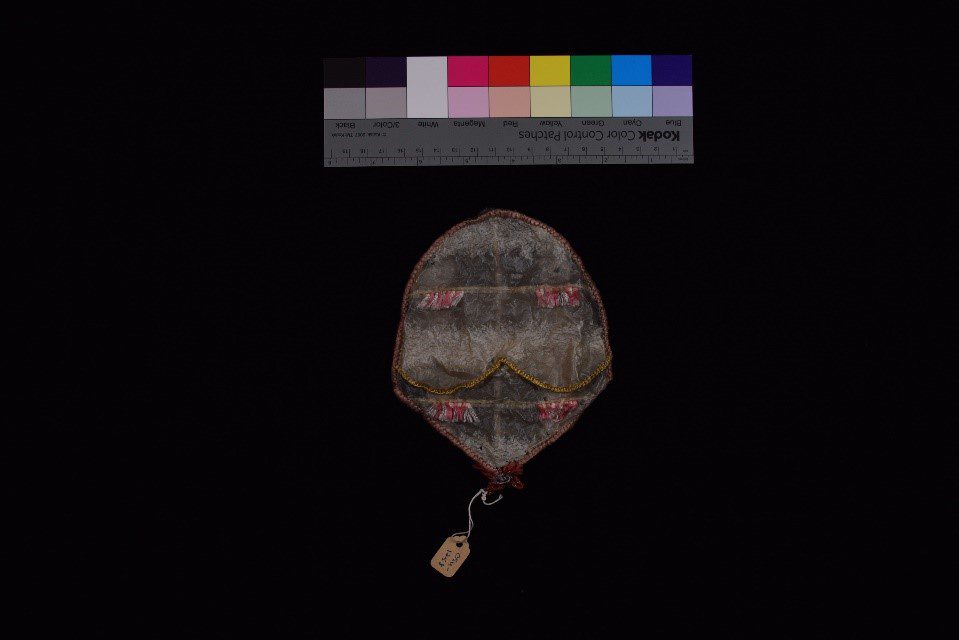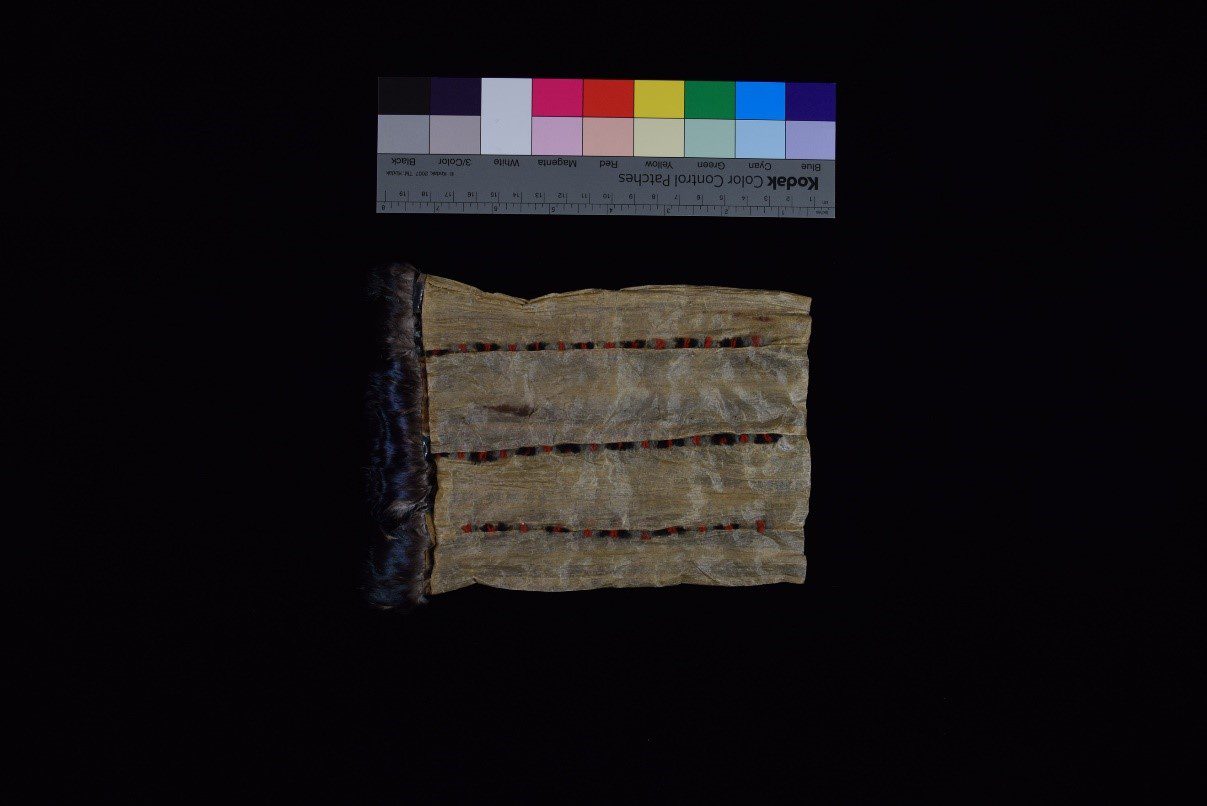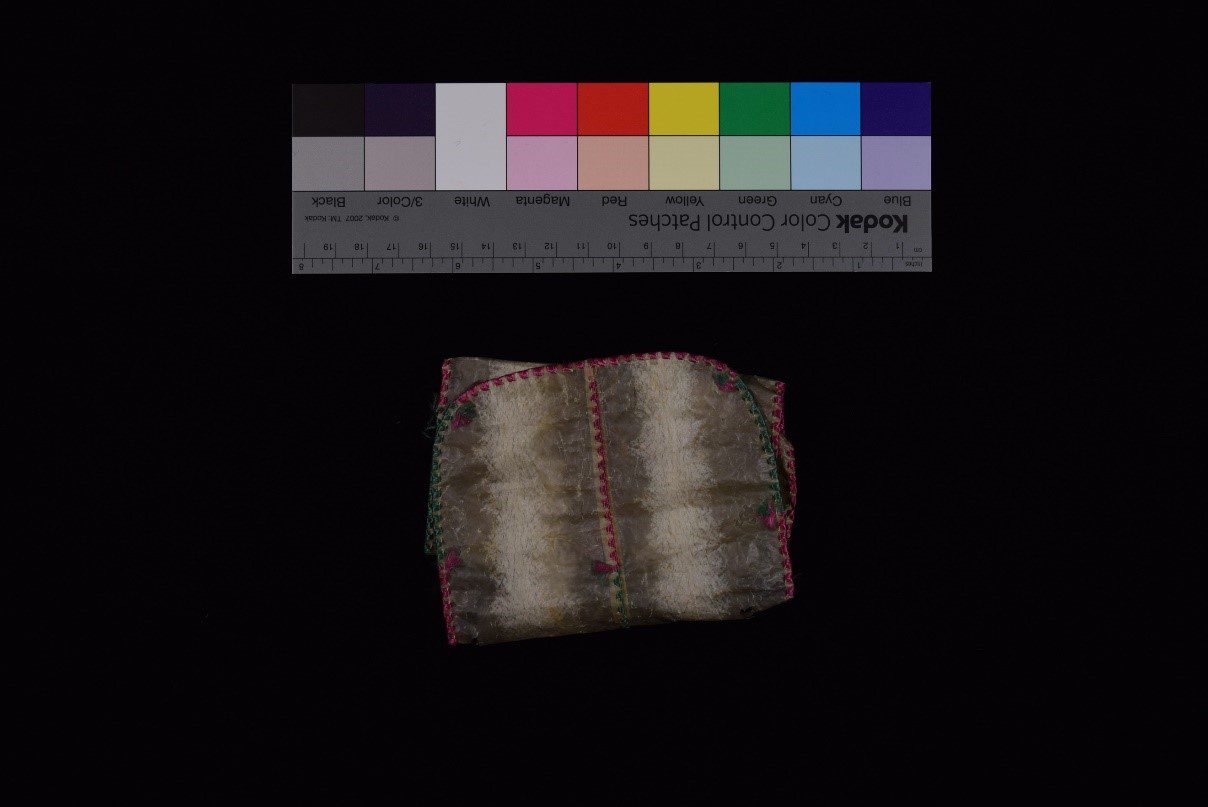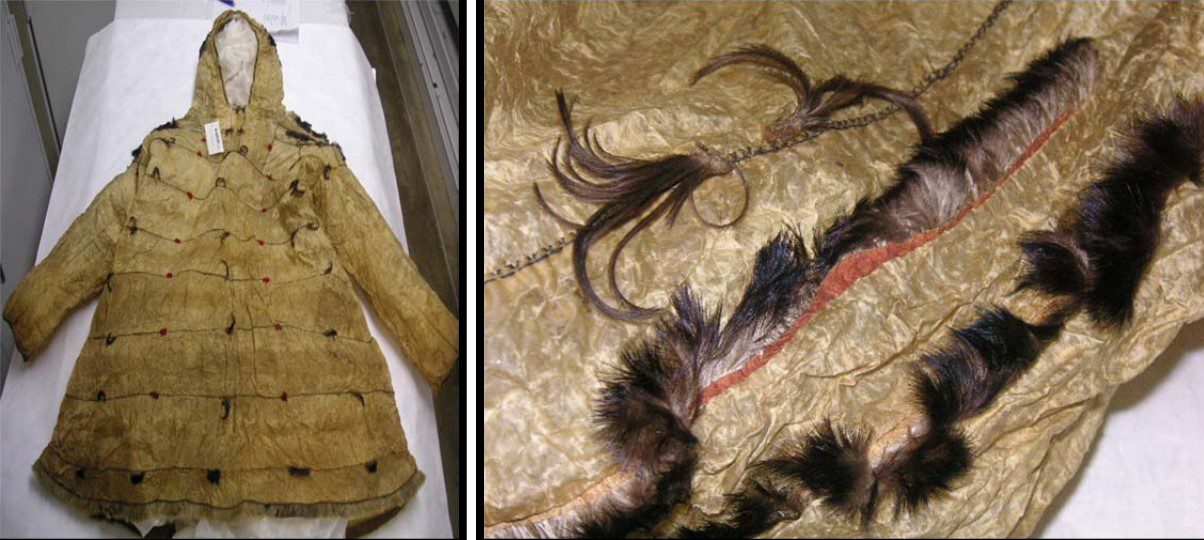Hello again! I am Lauren Nowakowski, the Ethnographic Collections Intern here at the Ohio History Connection. My job is to photograph and organize the objects in the ethnographic collection. There are items from all over the world, so I never know what I will find. Today I am looking into the small handmade pouches from Alaska that we have in the collection. They are delicate looking, but extremely effective, material is what first caught my eye while photographing them. Made of dried seal intestines, they look and feel similar to a slightly thicker tissue paper. The pouches in our collection have yarn embellishments of varying colors, and feathers. While researching the use of seal intestine, I discovered that it was not only used for small pockets and pouches, but also for outer coats and shoes. Other populations around the world in places such as Siberia, Canada, and Greenland also have used gut to create clothing. Useful to native Alaskan peoples and prized by Russian occupants of Alaska these, dried seal intestine pouches are both practical tools and works of art.

Seal Intestine Pouch. Alaska (Ohio History Connection Ethnographic Collection)
A3079-42-osu1258
What is the Process of Using Seal Intestine?
In Bethel, Alaska, at the Yupiit Piciryarait Cultural Center, a class was taught in 2015 by Mary Tunuchuk on the traditional art of ‘gut sewing.’ Tunuchuk began by washing the seal intestines, removing the membrane, washing them again in brine or freshwater, and then inflating the intestines to dry. The intestines are tied on both ends when inflated and left to dry for about two days. After they are completely dry, the intestines are cut lengthwise into long ribbons, and the sewing process begins. During her class she used ‘taperrnaq’ or grass to space the seams. This grass is flexible and allows for tightening of the thread without breaking the membrane. In total, this entire process can take up to one month. Depending on the environmental conditions that the gut is prepared in, the gut can become different colors. The differences in temperature, darkness, wind, and the duration of exposure to the environment determine the color. For example, opaque and white gut, referred to as ‘winter gut’, results from being prepared in the most extreme conditions of cold. Using seal intestines is a long and complicated, but immensely rewarding process.

Seal Intestine Pouch. Alaska (Ohio History Connection Ethnographic Collection)
Unnumbered

Seal Intestine Pouch. Alaska (Ohio History Connection Ethnographic Collection)
A3079-42-osu0416
Why Seal Intestine?
Seal intestine serves as both a waterproof and windproof material that was accessible in the area. This light material made it perfect for travel and storage. Men would often use them on kayak hunting trips in the ocean, where the jacket would provide insulation. Not only was it a perfect material for its purpose, but it also allowed for a connection between the animal and the human using it. For the Native Alaskans, the making of the gut garment is often seen as a gift to the animal whose flesh was provided. It was just one of the uses the hunted animal served.
Who Makes Them?
Native people in Alaska such as the Yup’ik and Aleut (Unangan) tribes are two of the many tribes that created and used these gut garments and products. Depending on their use, and who is making them, materials such as grass, gut, sinew, feathers, and caribou hair can be sewn in. The finished gut garments were used for celebration, as well as hunting and gathering in ocean kayaks. When Russians first occupied a location on Kodiak Island acquiring otter and seal for trade with China, they commissioned caped parkas made of gut. The Russian commissioned parkas are known as ‘Kamliekas.’ Variations in the type of gut used, the way it was sewn, and the different materials folded into stitches all differ based on where along the coastal region of Alaska they were created. For example, this garment seen in the below photograph from the Inupiat people uses a variety of construction techniques. The hood is similar to those seen on St Lawrence Island, the stitching resembles Aleut stitching, and the sleeves appear like Yupik or Inupiat. The numerous techniques, and slight variations between the different Native groups clothing, demonstrates the flourishing art that comes from the different cultures.

Gut garment from the Inupiat People. Alaska
(https://digitalcommons.unl.edu/cgi/viewcontent.cgi?article=1127&context=tsaconf)
Sources:
Museum Collections:
Example of Gut skin Parka at the Mystic Seaport Museum:
https://educators.mysticseaport.org/artifacts/intestine_raincoat/#:~:text=The%20coat%20pictured%20is%20an,the%20intestines%20of%20sea%20mammals.
Books:
Sinews of Survival: The Living Legacy of Inuit Clothing
By: Betty Kobayashi Issenman
Link to book:
https://www.ubcpress.ca/sinews-of-survival
Journal Articles:
Embellishments of the Alaska Native Gut Parka
By: Frank Reed
Link to article:
https://digitalcommons.unl.edu/cgi/viewcontent.cgi?article=1127&context=tsaconf
Article on Mary Tunuchuk’s class on sewing with seal guts
https://www.alaskapublic.org/2015/02/12/learning-to-sew-with-seal-guts/